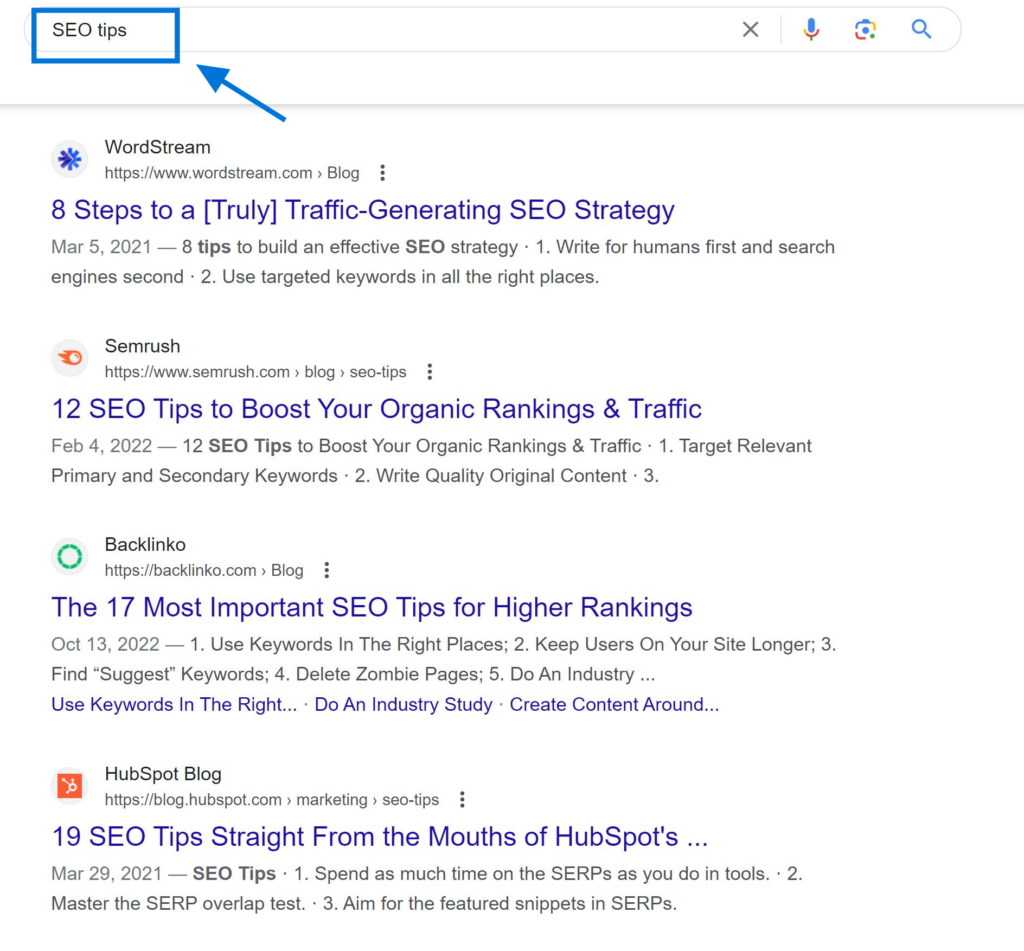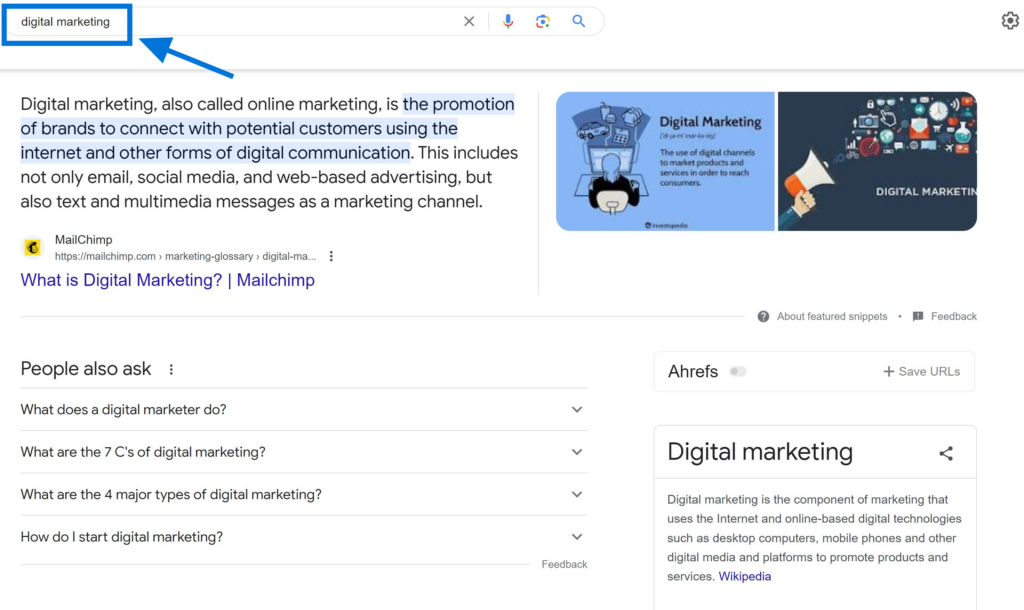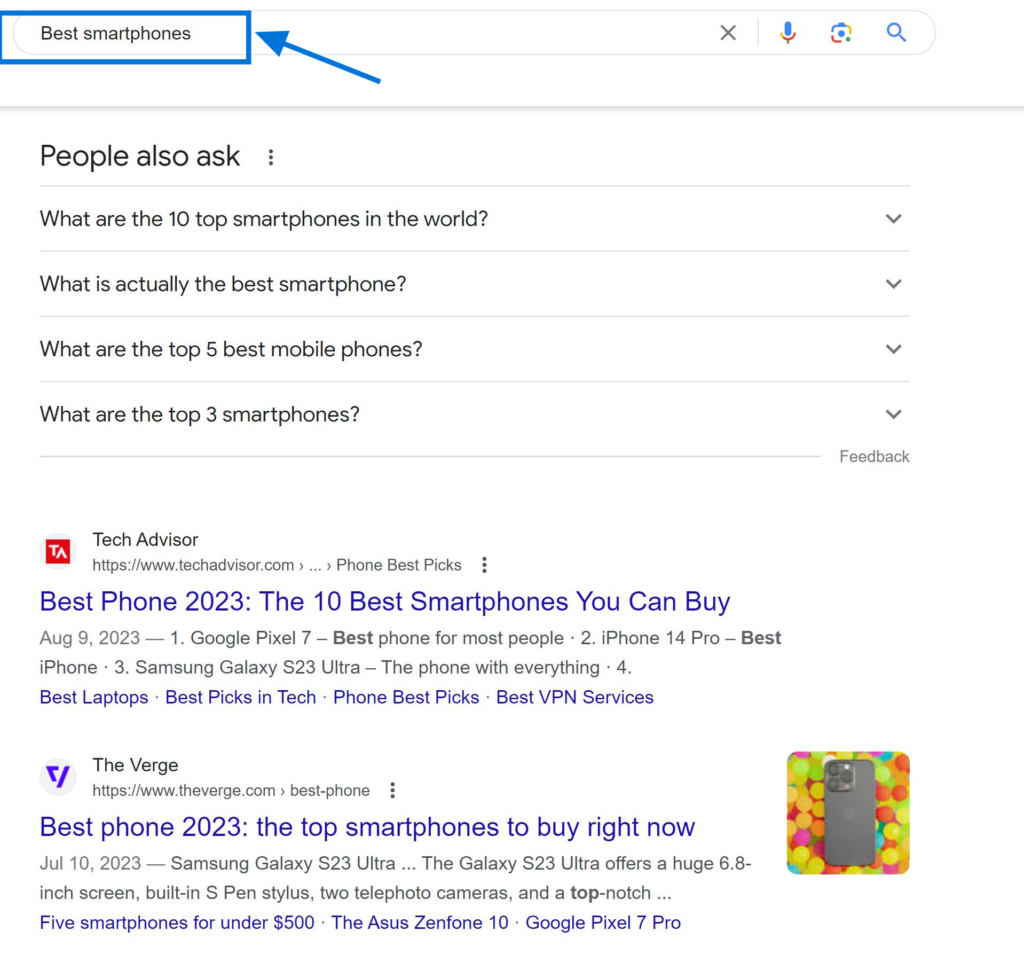Have you ever wondered how to improve your website’s visibility and attract more visitors? Understanding the importance of short-tail keywords is key to achieving effective SEO and boosting your online presence.
Short tail keywords, also known as head keywords, are concise search terms that consist of only a few words. They play a significant role in search engine rankings, as they capture the essence of a topic or query in a brief and straightforward manner.
By incorporating these keywords strategically into your website’s content, you can increase the odds of appearing higher in search results.
One crucial aspect to consider when using short-tail keywords is their keyword difficulty. This refers to the level of competition for a particular keyword. While popular topics may have high keyword difficulty, finding unique variations or long-tail versions can help you stand out from the crowd.
In the following sections, we will delve deeper into the details of short-tail keywords and explore how they can improve your website’s performance.
So buckle up and get ready to boost your online visibility with these powerful SEO tools!
- What are Short-tail Keywords?
- Examples of Short-tail Keywords
- Importance of Short Tail Keywords in SEO
- Exploring Short Tail Keywords: Types and Pros/Cons
- Finding and Incorporating Short Tail Keywords in Content
- The Dynamic Relationship between Short Tail and Long Tail Keywords
- Additional FAQs on Short-tail Keywords
- Conclusion: The Impact and Potential of Short Tail Keywords
What are Short-tail Keywords?
Short tail keywords, also known as head terms or seed keywords, are search terms that consist of one or two words. They play a crucial role in any keyword strategy, and understanding their characteristics is essential for effective SEO.
Characteristics of Short-tail Keywords
High Search Volume and Intense Competition:
One notable characteristic of short-tail keywords is their high search volume. Due to their broad nature, they attract a large number of searches.
For example, the term “running shoes” is a popular short-tail keyword that receives thousands of searches daily.
However, this high search volume also means intense competition among websites vying for top rankings on search engine results pages (SERPs).
Broad Search Results:
Short-tail keywords provide broad search results since they encompass a wide range of topics related to the main keyword.
For instance, if someone searches for “tail keywords,” they may find results related to long-tail keywords, keyword data analysis tools, and strategies for optimizing keyword usage.
Examples of Short-tail Keywords
Short-tail keywords play a crucial role in search engine optimization (SEO) strategies. These are concise and general terms that users commonly type into search engines when looking for information, products, or services.
Let’s explore some examples of short-tail keywords and understand their significance in online visibility.
- “SEO tips” is an example of a short tail keyword that encompasses the broad topic of search engine optimization. It is a popular term used by individuals seeking guidance on improving their website’s ranking on search engine result pages (SERPs).

- Another common short-tail keyword is “digital marketing.” This phrase covers a wide range of tactics and techniques employed to promote products or services through digital channels. As businesses increasingly shift their focus to the online realm, the demand for information related to digital marketing has skyrocketed.

- “Best smartphones“ is a popular short tail keyword phrase that reflects consumers’ desire to find top-quality mobile devices. People often use this term when they are in the market for a new smartphone but need assistance in narrowing down their options.

Short-tail keywords are valuable because they generate high search volumes due to their broad nature.
However, it’s important to note that competition for these keywords can be fierce, making it challenging to rank highly on SERPs.
Nevertheless, incorporating them strategically into your content can significantly increase your chances of attracting organic traffic.
When utilizing short-tail keywords effectively, consider the following:
- Seed Keywords: Begin with brainstorming seed keywords relevant to your business or industry. These could be general terms associated with your products, services, or topics you wish to cover.
- Keyword Research Tools: Use keyword research tools such as Google Keyword Planner, SEMrush, or Ahrefs to expand your seed keywords and identify related terms with substantial search volumes.
- Long-tail Variations: While short-tail keywords have higher search volumes, long-tail keyword variations provide more specific targeting and potentially higher conversion rates. Incorporate a mix of both short and long-tail keywords to optimize your content.
- Content Optimization: Craft compelling copy that incorporates short-tail keywords naturally into your headings, subheadings, and body text. However, avoid keyword stuffing, which can harm your website’s ranking.
- Monitoring and Refinement: Regularly monitor the performance of your chosen short tail keywords using tools like Google Analytics or Search Console. Make adjustments based on search trends and user behavior to improve visibility.
By effectively utilizing short-tail keywords in your online presence, you can increase the likelihood of attracting clicks, visits, and conversions.
However, keep in mind that SEO is an ongoing process that requires constant adaptation to changing algorithms and user behavior.
Importance of Short Tail Keywords in SEO
Short-tail keywords are vital in driving website traffic and improving their visibility.
Businesses can attract quality traffic and enhance their brand awareness by optimizing for these high search volume terms.
Short tail keywords are concise and general phrases that consist of one or two words. Due to their brevity, they tend to have a higher search volume compared to long-tail keywords. This means that more people are likely to use these popular terms when performing searches on search engines such as Google.
As a result, websites that incorporate relevant short-tail keywords have the potential to attract a larger audience.
When users search using short-tail keywords, they often have a broader search intent rather than seeking specific information.
For example, someone searching for “best smartphones“ is looking for general information about top-performing devices rather than specific features or models. By optimizing your website for such short-tail keywords related to your industry or niche, you can position yourself in front of users who are actively seeking products or services within your domain.
One of the primary benefits of targeting short-tail keywords is increased brand visibility and awareness.
When users repeatedly come across your website while searching for popular terms related to your industry, it helps establish your brand as an authority in that field. This exposure not only drives more traffic but also enhances the credibility and recognition of your business.
In addition to attracting more visitors, optimizing for short-tail keywords improves website ranking on search engines. Search engine optimization (SEO) techniques like incorporating relevant keyword phrases into meta tags, headers, and content help search engines understand the relevance of your web pages.
As a result, when users enter short-tail keyword queries matching those optimized on your site, search engines are more likely to rank your pages higher in the search results.
To maximize the benefits of short-tail keywords in SEO, it’s important to conduct thorough keyword research.
Identify the most relevant and popular short-tail keywords in your industry using tools like Google Keyword Planner or Ahrefs. Consider the search volume, competition, and relevance of each keyword before incorporating them into your website content.
Exploring Short Tail Keywords: Types and Pros/Cons
Types of Short Tail Keywords
Short-tail keywords are essential in search engine optimization (SEO) as they help drive organic traffic to websites.
Marketers and business owners can utilize different types of short-tail keywords to improve their online presence.
Generic Short-tail Keywords:
These are broad terms that describe a general topic or category. For example, “shoes” or “digital marketing.”
Generic short-tail keywords have a high search volume and can attract a wide audience.
However, due to their broad nature, they may not generate highly targeted traffic.
Product-oriented Short-tail Keywords:
These focus on specific products or services offered by a business. Examples include “running shoes” or “social media management tools.”
Product-oriented short-tail keywords allow businesses to target customers who are actively looking for a particular product.
However, competition for these keywords is often intense.
Location-based Short-tail keywords:
These include terms that incorporate a specific location, such as “New York restaurants” or “London hotels.”
Location-based short-tail keywords help businesses target customers in specific geographical areas and increase local visibility.
However, the audience reach may be limited compared to generic or product-oriented terms.
The Pros of Using Short Tail Keywords
Short tail keywords offer several advantages for businesses aiming to boost their online presence:
- High search volume: Due to their popularity and broader scope, short-tail keywords tend to have higher search volumes than their long-tail counterparts. This means more people are actively searching using these terms, increasing the potential for increased website traffic.
- Broader audience reach: Short tail keywords appeal to a wider audience since they cover general topics rather than specific ones. This broader reach increases the chances of attracting new visitors and potential customers.
- Potential for increased traffic: With higher search volumes and broader audience reach, there is an opportunity for increased website traffic when targeting popular short-tail keywords. This can lead to better brand visibility and potential conversions.
The Cons of Using Short Tail Keywords
While short-tail keywords offer benefits, there are also some drawbacks to consider:
- Intense competition: Short tail keywords are highly competitive as numerous businesses vie for top rankings on search engine results pages (SERPs). This means it can be challenging to achieve a high ranking, especially for popular generic terms.
- Lower conversion rates: Due to their broad nature, short-tail keywords may attract visitors who have a less specific intent. As a result, the conversion rates for these keywords tend to be lower compared to long-tail variations that target more specific queries.
Finding and Incorporating Short Tail Keywords in Content
Using the right keywords is crucial for improving your website’s visibility and attracting relevant traffic.
Short-tail keywords, also known as general search terms, play a significant role in driving online search traffic to your site.
Use Keyword Research Tool to Find Relevant Short-Tail Keywords.
Keyword research is an essential step in optimizing your content for search engines.
Using tools such as Google Keyword Planner, SEMrush, Moz, or Ahrefs, you can identify short-tail keywords with high search volumes and align them with your target audience’s search queries.
These tools provide valuable insights into the popularity of specific keywords, allowing you to gauge their potential impact on your content’s visibility.
Look for short-tail keywords that have a substantial search volume rate but are not overly competitive. This way, you can strike a balance between targeting popular terms and standing out from the competition.
Incorporate Short Tail Keywords Naturally Into Page Titles, Headings, Meta Descriptions, and Content Body.
Once you’ve identified relevant short-tail keywords through keyword research, it’s time to strategically incorporate them into various elements of your content.
Start by optimizing page titles and headings with these targeted keywords to signal their importance to search engines.
Meta descriptions are another crucial area where you can include short-tail keywords while providing concise summaries of your content. Ensure the incorporation feels natural and doesn’t disrupt the flow of the text or compromise readability.

Aim for a seamless integration that enhances user experience rather than detracting from it.
Avoid overstuffing your articles with too many repetitive instances of these key phrases, as it may negatively impact readability and deter readers from engaging with your content.
Avoid Overstuffing Content with Too Many Short-Tail Keywords; Maintain Readability and User Experience.
While it’s important to include short-tail keywords in your content, it is equally crucial to prioritize readability and user experience. Overstuffing your articles with an excessive number of keywords can make the text feel unnatural and spammy, which may deter readers from staying on your page.
To maintain a balance between optimizing for search engines and catering to your audience, consider using long-tail variations of short-tail keywords. These longer, more specific phrases provide opportunities to target niche search demand while maintaining a natural flow within your content.
Remember, the primary goal is to create valuable content that engages readers and provides them with the information they seek.
By prioritizing readability and user experience, you can build trust with your audience and increase the chances of converting visitors into loyal customers.
The Dynamic Relationship between Short Tail and Long Tail Keywords
Traffic from Long-Tail Keyword Searches Often Converts Better than That from Short-Tail Searches
Keywords play a vital role.
Short tail keywords are broad terms that consist of one or two words, such as “product” or “service.”
On the other hand, long tail keywords are more specific phrases that contain three or more words, like “high-quality organic skincare products.”
One significant advantage of long-tail keywords is their ability to drive highly targeted traffic. Users who search for specific queries using long-tail keywords usually have a clear intent and are closer to making a purchase decision. As a result, traffic generated from these searches tends to convert at higher rates compared to traffic from generic short-tail searches.
For example, if someone searches for “product,” it’s unclear what they are looking for. It could be anything from electronics to beauty items.
However, if someone specifically searches for “organic skincare product for sensitive skin,” they have already narrowed down their requirements. They are more likely to make a purchase when presented with relevant options.
The Use of Both Types Helps Target Different Stages of The Buyer’s Journey
In this dynamic relationship between short-tail and long-tail keywords, it’s essential to understand that they serve different purposes throughout the buyer’s journey.
Short tail keywords are typically used in the initial stages when customers are just starting their research and exploring various options.
These broader terms help businesses gain visibility among a larger audience and create brand awareness. They provide an opportunity to capture users who may not have specific queries yet but are interested in learning about products or services within a particular niche.
On the other hand, long-tail keywords come into play as customers progress further along the buyer’s journey.
As users become more informed about what they want, their search queries become more detailed and specific. By targeting these longer phrases, businesses can tap into a highly engaged audience actively seeking a particular product or service.
Balancing the Use of Both Types Can Maximize Organic Traffic and Conversions.
To optimize organic traffic and conversions, it’s crucial to strike a balance between short-tail and long-tail keywords.
Focusing solely on short-tail keywords may bring in more overall traffic due to their higher search volume. However, this broader audience might not be as targeted or ready to convert.
By incorporating long-tail keywords into your SEO strategy, you can attract visitors who are more likely to convert into customers. These specific queries indicate a higher level of intent and interest in making a purchase.
Long tail keywords often have less competition, making it easier for your website to rank higher in search engine results.
A well-rounded keyword approach that combines both short-tail and long-tail keywords allows businesses to target different perspectives of potential customers. It ensures visibility throughout the buyer’s journey while maximizing the chances of attracting high-quality traffic that is ready to convert.
Additional FAQs on Short-tail Keywords
What’s the Difference Between Short-Tail Keywords and Long-Tail Keywords?
Short tail keywords are typically shorter phrases with high search volume but high competition.
Long tail keywords are longer phrases with lower search volume but less competition. Both types of keywords play important roles in SEO strategies.
How Do I Find Relevant Short-Tail Keywords for My Website?
You can use keyword research tools like Google Keyword Planner or Ahrefs, or SEMRush to find relevant short-tail keywords related to your industry or niche.
Analyzing competitor websites or using autocomplete features on search engines can help generate ideas.
Can I Use Multiple Short-Tail Keywords in One Piece of Content?
Yes, you can use multiple short-tail keywords in one piece of content.
However, make sure to use them naturally and avoid keyword stuffing.
Focus on creating high-quality, informative content that incorporates relevant keywords seamlessly.
Are Short-Tail Keywords More Effective than Long-Tail Keywords?
Short-tail keywords are generally more competitive and harder to rank for due to their popularity. Long tail keywords, on the other hand, may have lower search volume but can attract highly targeted traffic.
Both types of keywords have their own advantages and should be used strategically based on your goals.
How Often Should I Update My Short-Tail Keyword Strategy?
It’s essential to regularly review and update your short-tail keyword strategy based on changes in search trends, industry developments, and competitor analysis.
Aim to stay proactive and adapt your strategy accordingly to maintain a strong online presence.
Conclusion: The Impact and Potential of Short Tail Keywords
So there you have it, the lowdown on short-tail keywords!
These little powerhouses can have a significant impact on your SEO efforts. By targeting popular and highly competitive search terms, you can increase your website’s visibility and attract more organic traffic.
Incorporating short-tail keywords strategically throughout your content helps search engines understand what your page is about, making it easier for them to rank you higher in search results.
But don’t stop there!
To truly maximize the potential of short-tail keywords, remember to also focus on long-tail keywords. These longer and more specific phrases may have lower search volume but can bring in highly targeted traffic that is more likely to convert into customers.
By striking a balance between short and long-tail keywords, you’ll be able to reach a wider audience while still catering to those who are actively searching for exactly what you offer.
Now that you’re armed with this knowledge optimize your website with a mix of short-tail and long-tail keywords. Keep experimenting, analyzing the results, and tweaking your strategy as needed.
Remember, SEO is an ongoing process that requires constant experimentation and continuous effort.
So dive in headfirst, stay up-to-date with the latest trends, and watch your website climb up those search engine rankings!
